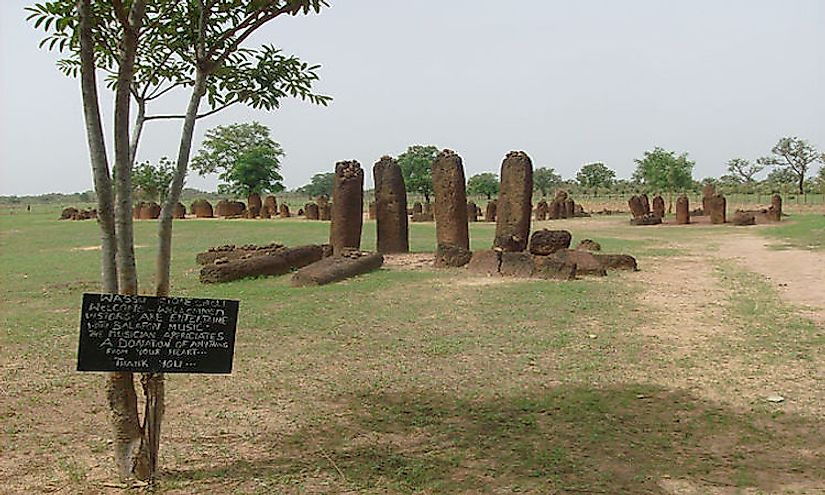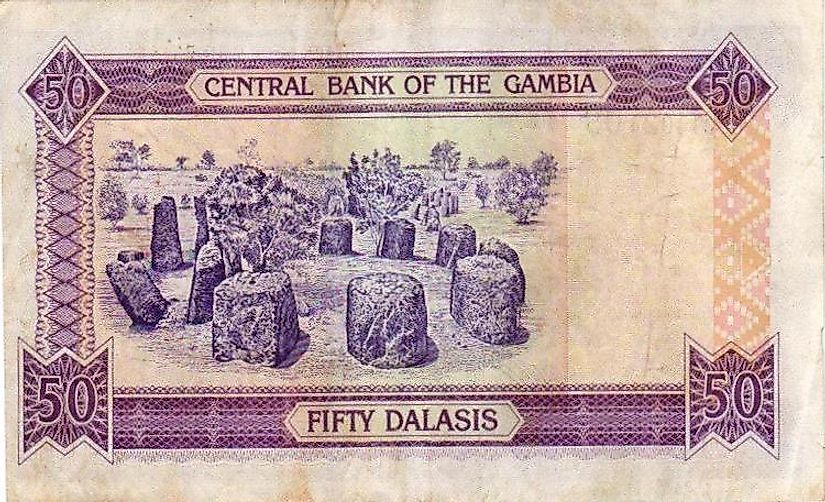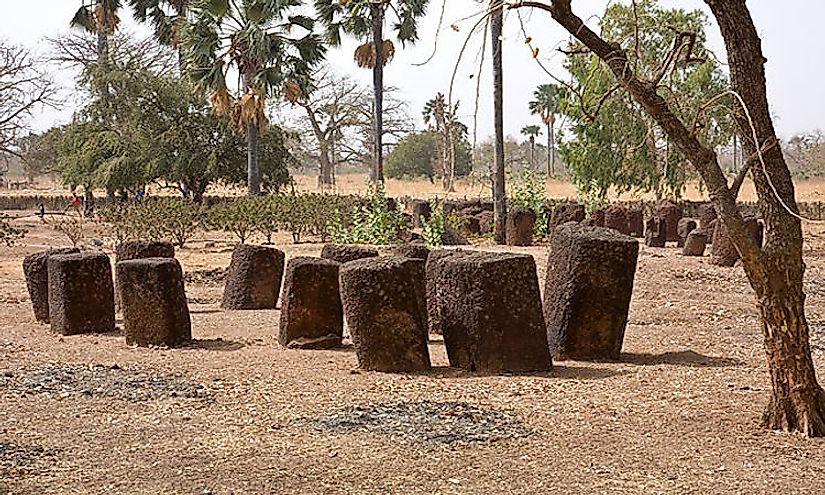Stone Circles Of Senegambia

The Sine Ngayène and Wanar sites in Senegal and Wassu and Kerbatch sites in Gambia are some of West Africa's greatest archaeological landmarks.
5. Description and History

As ancient monuments go, the stone circles of Senegal and Gambia may not be in the same league as the Great Pyramids, Stonehenge or the Easter Island statues. Yet, they represent a remarkable cultural and architectural achievement of pre-historic western Africa. Located in an area 100 km wide and 350 km within Senegal and Gambia are 1053 stone circles consisting of no less than 28,930 monoliths around 2m in height and weighing more than 7 tons each.The stone circles seem to have had a funerary purpose. Recent excavations in the immediate vicinity have uncovered mass burials, in which bodies were haphazardly interred, indicating an epidemic or a sacrificial ritual. However, according to Islamic writers, the monoliths were erected around the around the burial mounds of royal personages of the ancient empire of Ghana. After the advent of Islam, prominent Muslims were also buried under the same custom and the stone circles became sacred spaces.
4. Tourism
The stone circles and other monoliths found in the area are divided into four large complexes: Sine Ngayene and Wanar in Senegal; Wassu and Kerbatch lie in the Central River region of Gambia. Each stone circle comprises of between 10 and 24 megaliths; however, they are of the same approximate size in any given circle.Of the 1053 circles, 93 were designated UNESCO World Heritage sites in 2006. Sine Ngayene is the largest site in the entire region with 52 stone circles, including one concentric circle. But Wassu and Djalloumbere attract the maximum number of visitors as the region encompasses more than a thousand megaliths erected in as many as fifty circles.
3. Uniqueness

Recent excavations suggest that the stones date back from the 3rd century B.C. to 16th century A.D., reflecting a tradition that endured for almost two millennia. The stone circles of Senegambia are just one of the three trans-border World Heritage properties on the Dark Continent. It required some geological knowledge to identify the best laterite rocks from the nearby quarries and carve out the monoliths in cylindrical or polygonal pillars. The stones had to be extracted in singular pieces, which required tremendous skill. Having accomplished this, the stones were transported and erected in the various complexes along the River Gambia. This required a strong social order able to mobilize the hundreds of laborers required for the erection of each circle, much like in ancient Egypt.
2. Natural Surroundings, Sights, and Sounds
As the name suggests, the Stone Circles of Senegambia are located between the River Senegal and the River Gambia in West Africa. Around 1 km to the east of the Sine Ngayene complex in Senegal lies the quarry from which many of the megaliths were removed and processed. During exploration, pottery shards were found at Wanar. They were scattered around the stones and buried in different layers of earth. The layers suggest that the pottery was deposited after the drystone had disappeared but before the stones themselves collapsed. The stone circles are all found near burial mounds. The Sine Nhayene complex was surrounded by hundreds of burial mounds called tumuli. The mounds had leveled over centuries of erosion. There is evidence to show that people were first interred at the site and the monoliths were erected later in burial ceremonies.
1. Threats and Conservation Efforts
In Gambia, the sites are the responsibility of the Directorate for Cultural Heritage of the National Centre for Arts and Culture (NCAC), which employs a permanent staff of caretakers. The two sites in Senegal also enjoy the protection of central laws covering historical monuments and excavations and discoveries.There are long-term action plans to preserve the entire the Senegambian complex for its cultural significance. The objective is to promote the region as a tourist destination and provide economic benefits to the local communities. Beyond conservation and enhancement, both Senegal and Gambia encourage archaeological projects and in-depth research to better align the sites with educational and developmental objectives at the national levels.







